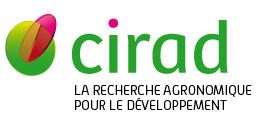Antibiotic resistance in Gram-negative bacteria isolated from farmed catfish
Sarter S., Hoang Nam Kha Nguyen, Le Thanh H., Lazard J., Montet D.. 2007. Food Control, 18 (11) : p. 1391-1396.
Feeding practices for Pangasius sp. aquaculture in Mekong Delta (Viet Nam) are assessed and the importance of home-made feeding is highlighted. Farmers spend 5% production cost for disease prevention, mainly antibiotics for prophylactic and therapeutic treatments. Therefore, the study aims to analyse the resistance of fish bacteria to antibiotics to help them improve their practices. Bacteria isolated from catfish (n = 92) were arbitrarily-selected from 3 different fish farms to analyse their antibiotic resistance and evaluate the antibiotic pressure exerted on the surrounding environment. Antimicrobial susceptibility was examined for selected isolates against 6 major antibiotics using the agar diffusion method: oxytetracycline, chloramphenicol, trimethoprim-sulphamethoxazole, nitrofurantoin, nalidixic acid, and ampicillin. The predominant bacterial microflora consisted of members of the Enterobacteriaceae (49.1%), Pseudomonads (35.2%) and Vibrionaceae (15.7%) families. The main multiple antibiotic resistance profiles included AM-OTC-SXT-NA (17.8% of isolates), OTC-SXT-NA (15.1%), AM-C-FT-SXT-NA (13.7%), AM-FT-OTC (9.6%), AM-C-FT-OTC-SXT-NA (8.2%). MAR index values of the 3 farms ranged from 0.36 to 0.62 which indicates a high-risk exposed-antibiotic source. These results showed that antibiotic resistance among fish indigenous bacteria is of a high concern in catfish aquaculture in the Mekong River Delta. ôˋ 2006 Elsevier Ltd All rights reserved.
Mots-clûˋs : pangasius; poisson chat (d'eau douce); bactûˋrie gram nûˋgatif; aquaculture; antibiotique; viet nam
Documents associûˋs
Article (a-revue û facteur d'impact)
Agents Cirad, auteurs de cette publication :
- Sarter Samira — Persyst / UMR ISEM
